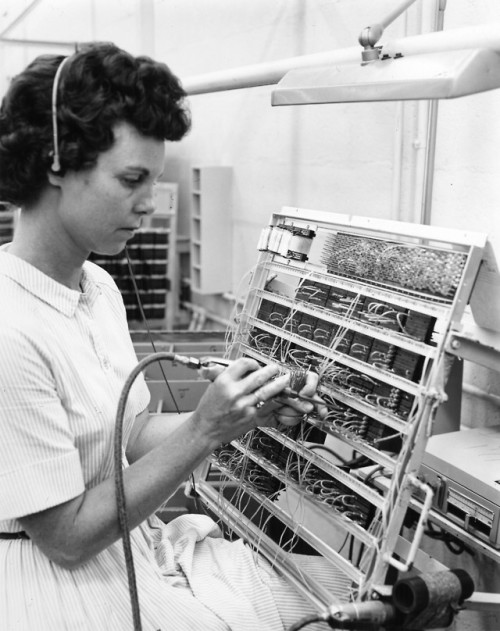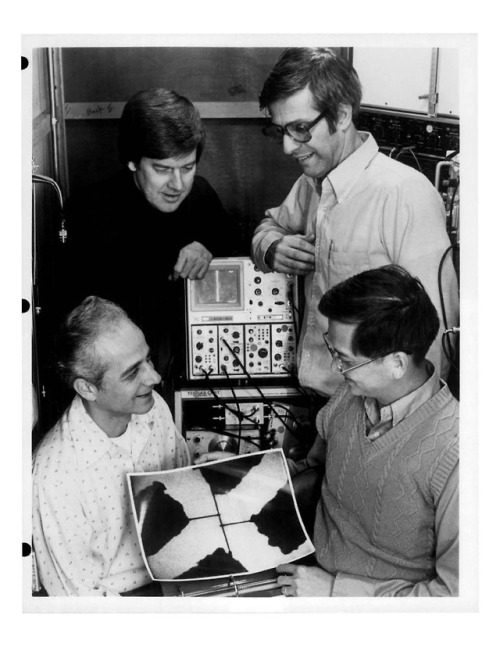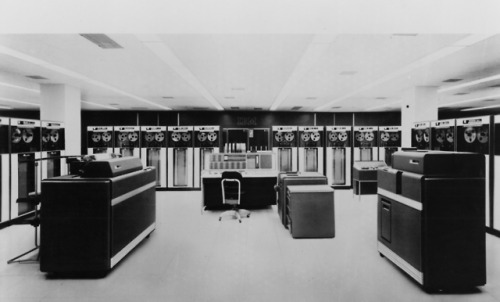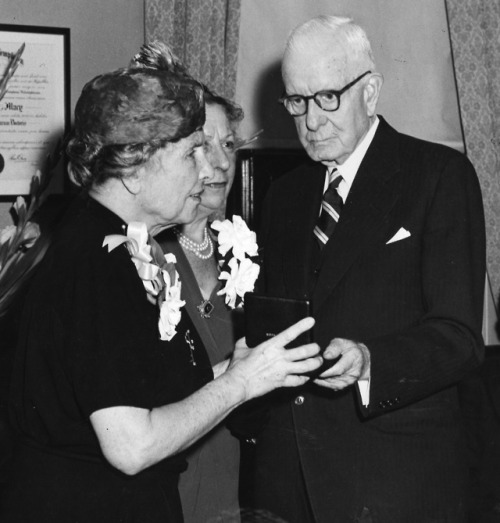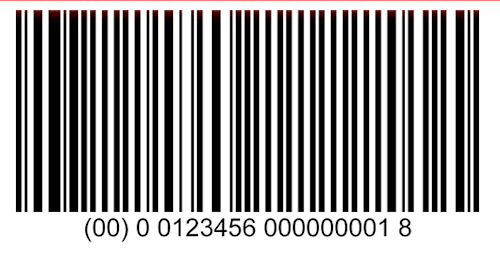#culture
If Girls Can See It, They Can Be It.
Where can a great idea take you? Anywhere—especially when you’re a child with a boundless future ahead of you. Take IBM Master Inventor Lisa Deluca. Her first brush with invention occurred in second grade, when she prototyped an idea she had for a full-body umbrella. This sparked a rich future for Lisa, setting her down a path of invention that has culminated in over 400 patents, making her the most prolific female inventor in IBM history. Every child deserves the chance to encounter the same spark—especially girls, whose rich curiosity is often underserved due to lack of exposure to female role models in STEM careers. That’s why IBM is working with the Ad Council and four other major companies on the “She Can STEM” campaign. It encourages girls to get involved in science, technology, engineering and math by promoting the accomplishments of role models like Lisa. We’re encouraging every woman in a STEM career to post a picture of their younger self juxtaposed with their current picture, showing young girls that “If she can STEM, so can you.” IBM believes sparking girls’ futures starts with showing them that their great ideas can take them anywhere they’d like to go. Join the #SheCanSTEM conversation on social with leaders like Lisa today.
Learn more about She Can STEM ->
Post link
“Houston, We Have Re-entry.”
We all love watching a spacecraft lift off, but equally important is its re-entry into the atmosphere at the end of a mission. On September 15, 1966, Gemini 11 became the first American crewed spacecraft to make a fully-automated onboard computer controlled re-entry. Guiding the spacecraft during this nail-biting endeavor? A 59-pound IBM computer designed to calculate the intricate maneuvers needed for safe re-entry into the Earth’s atmosphere. It was a landmark demonstration of trust in machinery, as the procedure went off without a hitch and set a new precedent for the world to cheer.
Learn more about IBM and the Gemini Program ->
Post link
Happy International Diamond Day!
Diamonds may be timeless, but today, they’re also timely. On International Diamond Day, IBM is proud to shine a light on TrustChainTM, a project with IBM Blockchain that is helping to trace the provenance of diamonds used in engagement rings. TrustChain’s goal is to instill trust in the origin and ethical sourcing of jewelry—a mission we can all celebrate.
Learn how TrustChain tracks diamonds on a blockchain ->
Post link
Transparency From Farm to Cup
How do you know your coffee is fresh and fairly-sourced? Brooklyn Roasting Company recently collaborated with IBM to launch a pop-up coffee shop at Smorgasburg, a Brooklyn food festival—serving coffee tracked on the IBM Blockchain platform. When visitors scanned their coffee cup’s unique QR code, they gained access to documentation from the coffee’s global journey, such as a Fair Trade audit revealing how proceeds from the sale of past raw beans helped build classrooms for girls in the Ethiopian growers’ communities. It’s an exciting demonstration of blockchain’s power to connect consumers with growers and small producers behind the products they love.
Learn more about the Blockchain Bean ->
Post link
One giant leap for mankind
Today, we celebrate the 49th anniversary of one of humanity’s greatest achievements: the Apollo 11 moon landing. On July 20, 1969, the first human walked on the moon. IBM is proud to have worked on all the Apollo lunar missions. Thousands of IBM administrators, engineers and technicians contributed both software, hardware and expertise to help ensure each mission’s success. And IBM is always looking forward, working to develop technologies to help prepare humanity for the next frontier.
Learn more about the Apollo missions ->
Post link
Typowriter…er, typewriter, that is
We all make typing mistakes, but in today’s world, a swift backspace rights all wrongs. In the typewriter era, you were stuck with your typos—until 1964, when the IBM Magnetic Tape Selectric Typewriter was developed. Using the latest assembly techniques, IBMers created a magnetic tape system for storing characters, bringing about the first analog word-processor device. The power it gave typists to correct their mistakes was a game-changer.
Post link
Watson does Wimbledon
In honor of All-England Lawn Tennis Club (AELTC) 150th anniversary, IBM Watson created the 2018 Official Championship Poster (above). To make it, Watson was taught to recognize all the various photographic elements such as grass, crowds, court, etc. Then, Watson sifted through 150 years of archived Wimbledon photography – over 300,000 photos – and stitched the images together in the appropriate areas, based on color and content. The final photo mosaic is comprised of over 8,000 images, and, thanks to its pointillist quality, looks simultaneously modern and timeless. Beyond art-making, Watson’s visual recognition skills can help businesses in a broader sense, too, helping to classify wide categories of visual content.
Learn more about Wimbledon and Watson ->
Post link
The Highlight Machine
FOX Sports has collaborated with IBM to create the Highlight Machine, a powerful platform that uses AI to archive and curate over 98,000 hours of video clips, game highlights and historical footage from soccer’s biggest tournament. Built with IBM Watson Media’s AI video technology and IBM iX’s user experience expertise, the platform is designed so that soccer fans don’t miss a single play, penalty kick, or goal. Fans can browse the massive archive and build their own personalized highlight reels, sorting and saving clips by year, team, player, match, and play type. And thanks to the processing power of Watson, the clips are available just seconds after the action ends in the match. It’s another way for fans all over the world to enjoy the Beautiful Game.
Learn more about the Highlight Machine ->
Post link
A smart app to help those living with diabetes
There are approximately 30.3 million Americans living with diabetes – and 1.5 million new cases are being diagnosed every year. To help people with diabetes, Medtronic partnered with IBM to build an intelligent digital application, called Sugar.IQ, that uses machine learning to provide personalized, real-time insights and help predict the likelihood of hypoglycemia—a state of dangerously low blood sugar that can impact the brain’s ability to function—up to 4 hours in advance. IBM is proud to have helped Medtronic put smart technology to work to help those living with diabetes.
Post link
IBM and Nanotechnology
Nanotechnology is the area of science and innovation concerned with material of less than 100 nanometers. Specifically, it involves the control and manipulation of individual atoms and molecules. On this day in 1979, IBM created the smallest electronic circuit elements ever reported. The nano devices had a thickness of only 100 by 200 atomic diameters – that’s smaller than the fibers of a human nerve. This breakthrough was one of the first steps in the still-ongoing development of nanotechnology. Today, IBM scientists continue to explore and improve the design of semiconductors and computer chips, making them smaller, smarter and more energy efficient. It’s another way IBM is investing in practical technology development for the future.
Learn more about nanotechnology ->
Post link
IBM 3525 Card Punch: Innovating an Innovation
IBM was one of the first companies to begin manufacturing punched cards. For almost four decades, punched cards were the major medium for storing, sorting and reporting data processed first through punched card equipment and—later—computers. Colloquially known as “IBM cards,” the punched cards were so embedded in business operations that by the 1950s, they represented over 20% of IBM’s revenue. On this day in 1971, IBM announced a new version of the IBM 3525 Card Punch replacing incandescent lamps with LEDs—a new technology at the time—to read punched cards. While the punched card may now be a thing of the past, LEDs are as relevant as ever, with new applications being actively developed. In retrospect, with a bit of serendipity, one great innovation passed the baton to another.
Learn more about the long history of the punched card ->
Post link
Putting Twiga Foods on the Blockchain
Based in Nairobi, Kenya, Twiga Foods is a business-to-business logistics platform for food stalls and kiosks. Twiga helps farmers distribute bananas, tomatoes, onions, potatoes, and more to 2,600 kiosks across Kenya. But they realized that they could help farmers sell more produce if they gave them access to capital, credit and other financial services. Working together with IBM, Twiga Foods developed a machine learning-powered, blockchain-enabled finance lending platform that is designed to manage and track micro-loans to farmers and vendors in Africa to help stimulate the economy and benefit its users. During an eight-week pilot program, Twiga’s service conducted 220 micro-loans (the average size of each loan is about $30, or 3,020 KES), which helped increase order size by 30% and profits for each retailer, on average, by about 6%. IBM is excited to help promote social good and use technology to bring positive change to these regional markets.
Learn more about Twiga Foods and its blockchain-powered micro-loan service ->
Post link
Women in Technology (WIT) recognizes Neera Mathur
How do you become a Women in Technology (WIT) Woman of the Year Award Honoree? Ask IBMer Neera Mathur, and she’d probably tell you there’s more to it than a passion for enterprise data solutions, which she has. There’s more to it than deep technical knowledge, business understanding, and strong communication skills, all of which she has. There’s even more to it than essential experience leading a core team of IT architects, IT specialists, business analysts, and software engineers—experience that she, of course, has. No, what Neera might say is that to achieve an honoree status like WIT Woman of the Year, you must constantly re-invent yourself and inspire the next generation. Neera might advise you to take an active role in the community, like she has, dedicating time to the self-empowerment of elementary and middle school girls to choose careers in tech. Or she might recommend leading volunteer teachers for Girls Who Code or mentoring students in the non-profit organization Cool Girls, as she has. Whatever Neera might say, we’re proud that we, at IBM, can not only say she’s one of us, but that she’s been a role model during her entire thirty-five year tenure at IBM.
See Neera’s nomination among other accomplished women in tech ->
Post link
AI’s Self-Portrait
IBM Research asked AI to create a self-portrait. And the result (shown here) was published in the New York Times on October 19. Creating the image required a lengthy training program. First, the system identified a core visual concept of AI by ingesting over 3,000 articles about AI from the NYT, which it narrowed down to a human and robot shaking hands. Then, it was trained on a data set of over 1,000 images of robot and human hands in order to draw a new image. And, finally, it was trained with samples of NYT cover art so that the final creation would fit the publishers’ visual style. The resulting original art piece portrays AI and human creativity working together, hand in hand.
Learn more about the process behind the AI self-portrait ->
Post link
Engineering the Sydney Opera House Arches
Today in 1973, the iconic Sydney Opera House was completed. One of the unsung heroes behind this marvel of human engineering was a Frenchman named Joe Bertony. Bertony designed the truss that supports the famous arches. Because each arch was differently curved, the mathematical equations required were extremely complex. So complex, in fact, that Bertony conducted over 30,000 separate equations to figure out how much stress could be applied to the arch structure. Because of this complexity – and because the margin of error could be no more than half an inch – a computer was required to double-check each of his brilliant equations. At the time, the only computer powerful enough was the IBM 7090, which was selected for the task. IBM is proud to have supported the construction of this amazing building and to continue supporting human ingenuity to create amazing things.
Learn more about the story of building the Sydney Opera House ->
Post link
When Helen Keller honored Thomas J. Watson
Helen Keller is one of the most esteemed disability advocates in all of history. So it was an especially powerful moment when, on this day in 1952, Keller herself awarded IBM head Thomas J. Watson the Migel Medal, an award honoring IBM’s inclusion and diversity standards hiring people with disabilities, including those who are blind. It was a history-making start to a workplace culture of valuing diversity and inclusion—a culture that still thrives today.
Learn more about this iconic moment ->
Post link
How the Barcode Changed Retail as We Know It
On this date in 1973, IBM introduced the universal product code, or UPC. Along with the introduction of laser scanning technology, the UPC barcode quickly revolutionized the grocery and retail industries, making checkout faster and inventory tracking a lot easier. The barcode changed the information processing system for almost every industry around the world and remains one of the most pervasive inventory tracking tools in the world today. Though just a small group of black bars, the UPC changed the world in a very big way.
Learn more about the invention of the barcode scanner ->
Post link
“Growth and Comfort Never Co-exist”
Growing up with a single mother and three siblings, Ginni Rometty, Chairman, President and CEO of IBM, learned the importance of a good work ethic at an early age. Ginni took these lessons to heart, from school to the workplace. “We learned you never let someone define who you are,” Ginni says. “Only you define who you are.” She earned a degree in engineering from Northwestern University (where she was also the valedictorian of her graduating class) and, in 2011, became the first female CEO of IBM. Today, Ginni defines what it means to be a strong, positive role model for women everywhere.
Now I bet most of you have heard of the famous ‘Coming of Age Day’ (Seijin no Hi・成人の日) which celebrates youths transition into adulthood at the tender age of 20. But here is a celebration which I have noticed most people outside of Japan are not so familiar with, 7-5-3 (Shichi-Go-San・七-五-三) which happens every year on November 15.

7-5-3 (Shichi-Go-San・七-五-三) is day which both celebrates and prays for the growth of healthy children. The significance of the ages 7, 5 and 3 are that they are the celebrated milestone years for children in Japan. Much like how many eastern countries celebrate certain ages, i.e. 3, 10, 13 and 16.
The reasons for these particular ages, dates back to the “medieval” times of samurai and aristocrats families (web-japan.org), these ages saw the following:
- 3 years old: Both boys and girls of 3 years stopped having their hair shaven and were permitted to grow their hair out.
- 5 years old: Boys of 5 years could don a ‘hakama’ in public for the first time.
- 7 years old: Girl could begin using an ‘obi’ sash to tie their kimonos instead of the cords at the age of 7.
By the time of the Edo period (1603-1868) the ‘common’ folk of Japan were also celebrating these customs and began to visit shrines with prayers and offering for their children’s healthy growth. This custom/celebration is not a part of a holiday thus people celebrating this day can often be seen at the shrine the weekend before or after November 15th(ginkoya.com).







